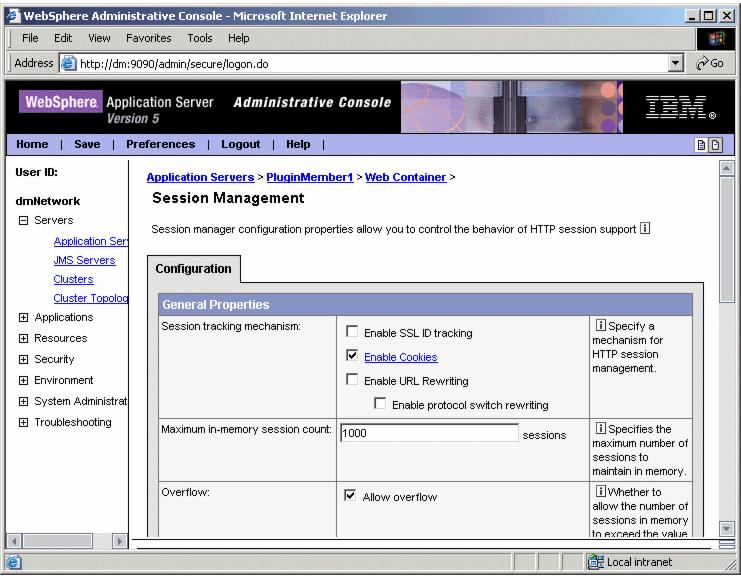Session persistence and failover
Once an appserver has established a session for a user, the user's subsequent requests must be sent to the same application server. The session is stored in a local cache on the application server, as defined in the settings of the session manager, shown in Figure 5-13.

Figure 5-13 Local session cache settings
If this appserver is unavailable when the plug-in attempts to connect to it, the plug-in will choose another cluster member and attempt connection. Once a connection to a cluster member is successful, the session manager will decide what to do with the session, as shown in Figure 5-10.
The cluster member will find that it does not have the session cached locally and thus will create a new session.
To avoid the creation of a new session, a persistent database or memory-to-memory replication can be used to access sessions from other appservers. Persistent stores use a database to hold the session information from all cluster members. Memory-to-memory replication is a new feature of WebSphere V5.0. It enables the sharing of sessions between application servers without using a database.
WebSphere is a trademark of the IBM Corporation in the United States, other countries, or both.
IBM is a trademark of the IBM Corporation in the United States, other countries, or both.